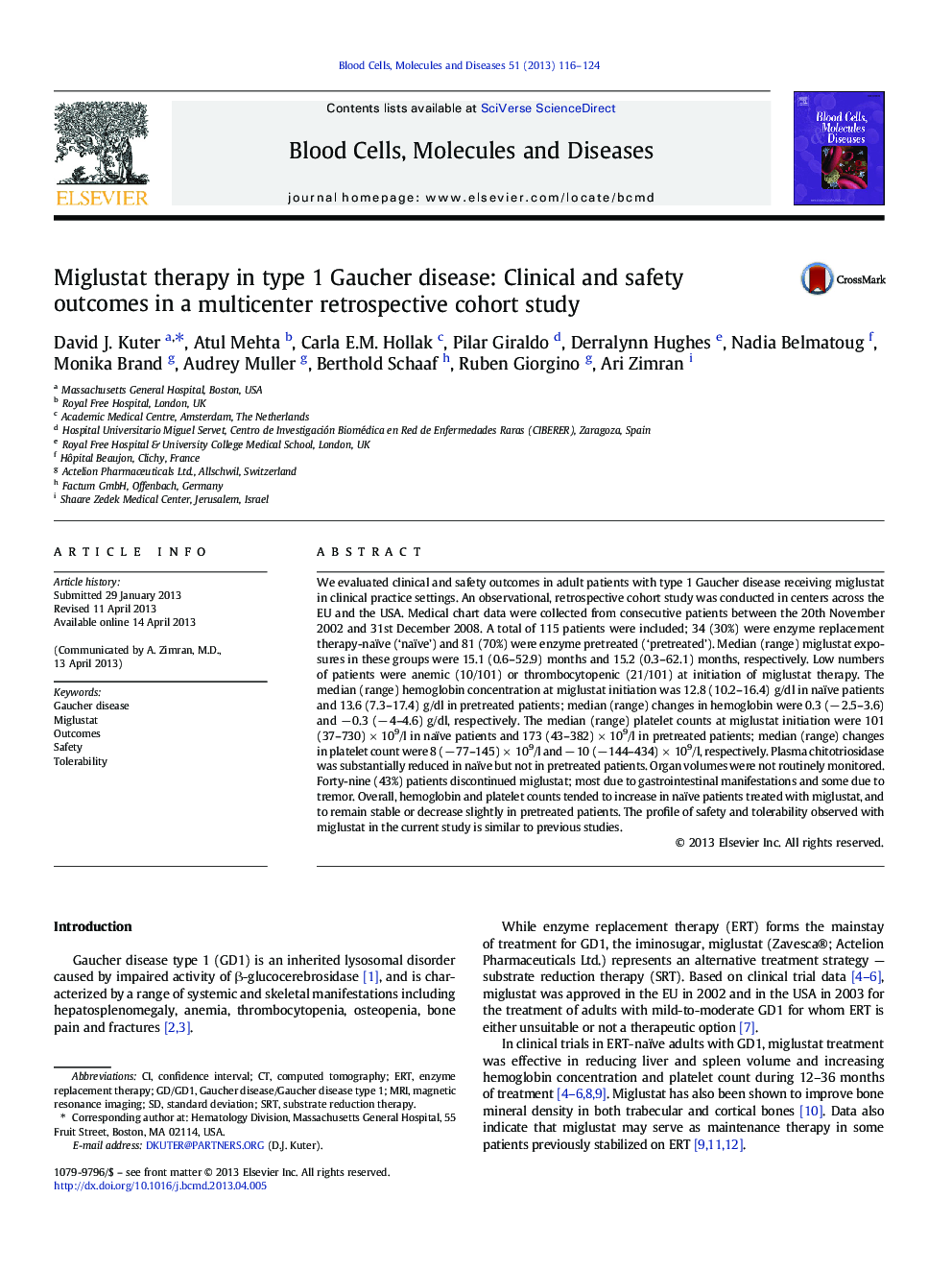| Article ID | Journal | Published Year | Pages | File Type |
|---|---|---|---|---|
| 2827336 | Blood Cells, Molecules, and Diseases | 2013 | 9 Pages |
We evaluated clinical and safety outcomes in adult patients with type 1 Gaucher disease receiving miglustat in clinical practice settings. An observational, retrospective cohort study was conducted in centers across the EU and the USA. Medical chart data were collected from consecutive patients between the 20th November 2002 and 31st December 2008. A total of 115 patients were included; 34 (30%) were enzyme replacement therapy-naïve (‘naïve’) and 81 (70%) were enzyme pretreated (‘pretreated’). Median (range) miglustat exposures in these groups were 15.1 (0.6–52.9) months and 15.2 (0.3–62.1) months, respectively. Low numbers of patients were anemic (10/101) or thrombocytopenic (21/101) at initiation of miglustat therapy. The median (range) hemoglobin concentration at miglustat initiation was 12.8 (10.2–16.4) g/dl in naïve patients and 13.6 (7.3–17.4) g/dl in pretreated patients; median (range) changes in hemoglobin were 0.3 (− 2.5–3.6) and − 0.3 (− 4–4.6) g/dl, respectively. The median (range) platelet counts at miglustat initiation were 101 (37–730) × 109/l in naïve patients and 173 (43–382) × 109/l in pretreated patients; median (range) changes in platelet count were 8 (− 77–145) × 109/l and − 10 (− 144–434) × 109/l, respectively. Plasma chitotriosidase was substantially reduced in naïve but not in pretreated patients. Organ volumes were not routinely monitored. Forty-nine (43%) patients discontinued miglustat; most due to gastrointestinal manifestations and some due to tremor. Overall, hemoglobin and platelet counts tended to increase in naïve patients treated with miglustat, and to remain stable or decrease slightly in pretreated patients. The profile of safety and tolerability observed with miglustat in the current study is similar to previous studies.
